Despite the gloomy economic outlook components distribution in Europe confounded the pundits and enjoyed a healthy 2015. According to DMASS (Distributors’ and Manufacturers’ Association of Semiconductor Specialists), semiconductor distribution sales in Q4/CY15 grew by 11.3% to 1.75bn Euro compared to Q4/CY14 and became the strongest Christmas quarter ever. Sales of 7.3bn Euro, a 14.6% gain over 2014 made for an impressive 2015.
The exchange rate effects between US Dollar and Euro diminished compared to previous quarters, but on an annual basis, the influence of the stronger dollar and its side effects (price increases, dollar factoring) on the growth was significant – DMASS estimates that 60% of the increase in 2015 was due to the exchange rate swing, in other words, the organic growth lay between 6 and 7%. (As a perspective, DMASS sales, converted to US Dollars, dropped 4.4% compared to 2014.)
Georg Steinberger, chairman of DMASS commented: “As predicted, we enjoyed record business in distribution in 2015, at least from a sales perspective. What is different to previous years is the fact that no shortages accompanied this double-digit growth, product availability was never an issue. A big part of the success story is a purely technical effect that will disappear in 2016, unless the exchange rates run riot again. All signs – currency effects, economy, and Chinese downturn – would lead to conclude that we will encounter a far more solemn business environment in 2016.”
From a regional vantage point, the watershed between over- and under-proportional growth rates ran along the “Euro-Divide”: countries who traditionally deal more in Dollars or in stronger currencies other than Euro (Eastern Europe, Sweden, Switzerland) grew faster.
The exception is the UK, which grew – despite a strong GBP – below average.
Another effect was production transfers to Eastern Europe or Asia which dragged smaller markets like Norway, Finland, the Baltic States and Belgium down.
Russia still suffers from the sanctions and ended as the only country in the DMASS Region with a decline. On an annual basis, Germany grew 9.5% to 2.2bn Euro, Italy 12.3% to 667m Euro, the UK by 12.8% to 605m Euro and France by 12.3% to 561m Euro. In contrast, Eastern Europe grew by 30.4% to 958m Euro, while Nordic increased sales by 19.5% to 713m Euro, almost entirely driven by the Swedish market.
Added Steinberger: “The major success stories throughout 2015 were without doubt almost all in Eastern Europe, mainly driven by exchange rate effects and production transfer. It remains to be seen if a normalisation of the accounting basis (Euro/Dollar balance) also leads to a normalisation of regional strengths. If 2015 and 2016 are comparable from an exchange rate perspective, it would be interesting to see how positive (IoT) and negative effects (China) play out.”
At the product level, all major product groups except Power (6.6%), Standard Logic (9.3%), MOS Micro (13.5%) and Programmable Logic (14.5%) grew over-proportionally. In 2015, Analogue remained the strongest product group with a 15.8% increase to 2.1bn Euro, followed by MOS Micro which grew 13.5% to 1.51bn Euro). Opto sales surged 15.4% to 750m Euro) and Power grew 6.6% to 684m Euro).
Georg Steinberger concluded: “Very few standard products really made a mark in 2015 in terms of sales growth, the difference mostly came from design products like complex logic, Analogue or high-end microcontrollers. For example, for the first time ever, 32-Bit MCUs beat 8-Bit-MCUs at the annual level. This trend will continue with the advent of Internet of Things and Industry 4.0.”
DMASS continues to report to members only on Passive Components, Electromechanical Components and Power Supplies, the latest statistics addition to DMASS Ltd. It is expected to have numbers reportable to the market by 2016.
Note: DMASS only reports industrial semiconductor sales, defined as all semiconductors, excluding the PC channel.


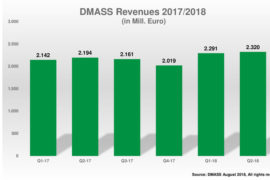
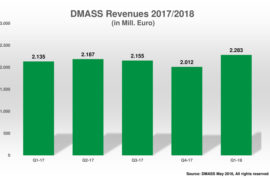
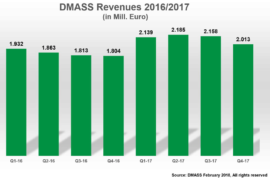
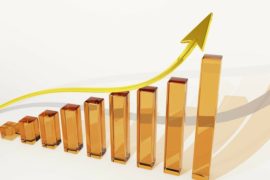
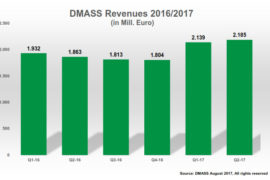
Comments are closed.